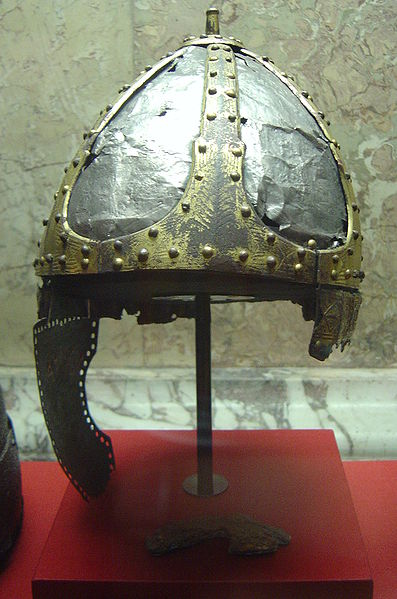The Spangenhelm, or segmented helmet, was a popular medieval European combat helmet design of Late Antiquity and the Early Middle Ages. They are often contrasted with Eastern lamellar helmets.
A surviving Spangenhelm, 6th century (Kunsthistorisches Museum, Vienna)
Spangenhelm (iron), Migration Period - Museum of the Cetinska Krajina Region - Sinj, Croatia
Sarmatian warriors with Spangenhelms, Trajan's Column (around 110 A.D.)
warriors in the Kizil Caves, following the events of 552 CE Turk uprising and the subsequent Turk expansion. 2nd half of the 6th century CE. The helmet is a characteristic pear-shaped segmented helmet of the Turkic type.
The lamellar helmet was a type of helmet used in Europe during the Early Middle Ages. Examples are characterized by caps made from overlapping lamellar scales, in addition to a brow plate, cheek guards, and camail. They are distinct from the contemporary spangenhelm and crested helmets also found in Europe; unlike those, which are influenced by Roman designs, Lamellenhelme display eastern influence and have primarily been found in southeastern Europe. They are mostly associated with the Avars of Pannonia and the Lombards of Italy.
Reconstruction of the Lamellenhelm from Niederstotzingen. Dated 560-600 CE. This is considered as an Avar lamellar helmet.
A print of a lamellar helmet
Helmets in the "Cave of the Painters", 5th century CE
Image: Mural with warriors, Cave of the Painters, Kizil Caves (detail)








